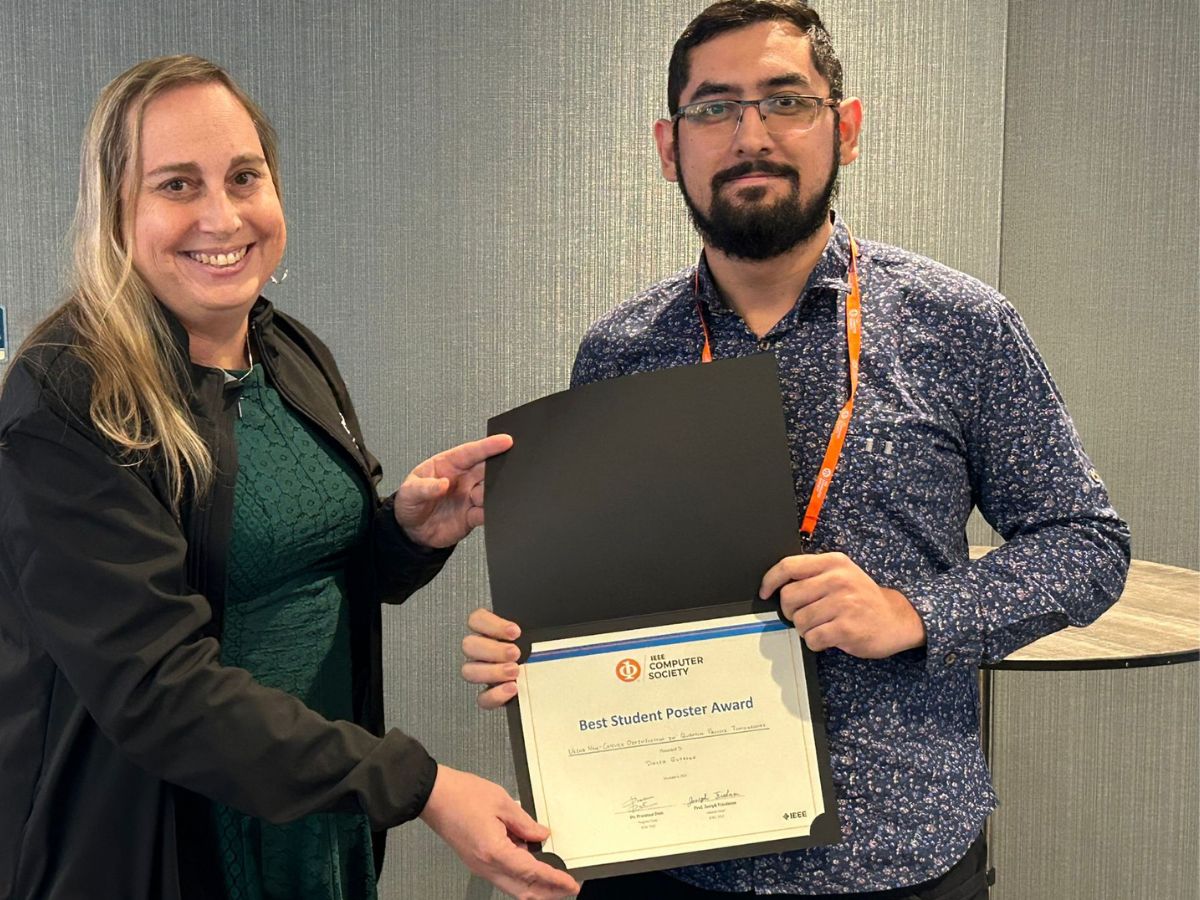Rice CS Ph.D. Student David Quiroga recently won the Best Student Poster Award at the 2023 International Conference on Rebooting Computing (ICRC). Quiroga, advised by Anastasios Kyrillidis, Noah Harding Assistant Professor of Computer Science, focused his research on an algorithm with the potential to improve the verification of quantum computing.
The paper, titled Using non-convex optimization in quantum process tomography: Factored gradient descent is tough to beat, details a novel algorithm applied to the quantum process tomography (QPT) problem in quantum computing scenarios.
The QPT Problem
The processes a quantum computer goes through are not directly observable because the main building blocks of a quantum computer, called qubits, exist in multiple states at the same time. That state, called superposition, makes it challenging to measure quantum processes.
There are, however, some ways to try and measure those processes despite that difficulty. QPT is one of them, measuring a quantum process through a series of snapshot mathematical measurements. Quiroga describes QPT as “a way to characterize a quantum process through measurement data.”
The problem with QPT is that it becomes difficult to scale very quickly. “QPT stops being feasible after about five qubits” using the current algorithms, Quiroga explained. Since each qubit can exist in either a 0 or 1 state, adding just one additional qubit multiplies the possibilities you need to calculate exponentially.
A Novel Algorithm For Quantum Computing
To address this problem, Quiroga and Kyrillidis used a novel algorithm called a factored gradient descent algorithm. The idea was to reduce the number and complexity of the calculations necessary for QPT while making those calculations more resistant to the error inherent to the process known as “noise.”
“In quantum computing, you have these gates which you apply, sort of the basic building blocks of quantum computing,” Quiroga explained. “But most of them are noisy, so they’re…approximate operations. The problem is when you have many approximate operations being applied, in the end, you won’t have anything near an exact result.”
However, the novel algorithm used for Quiroga’s paper is resistant to two common types of noise in QPT calculations: depolarizing noise and Gaussian noise. It also uses “compressed sensing,” a process that uses already-known information to reduce the number of measurements, calculations, and time needed for a given experiment.
“In this problem, the quantum process tomography has enough structure as a problem that allows us to use a lot of prior knowledge to make the problem easier to solve (from a computational perspective) and could be amenable to theoretical analysis,” Assistant Professor Kyrillidis said of the processes.
He added, "...while the classical way of solving this is via convex optimization, we take the route of non-convex optimization.”
Quiroga explained that the results of this algorithm are only viable through four, maybe five qubits, but still represent an advancement in quantum computing. Its main application could be to test the quantum process's viability and quantum computers' viability by acting as a gauge for how well they complete experiments.
According to Quiroga, the factored descent algorithm can also be used to design better quantum gates. Many quantum computers initiate a quantum process by using shaped electromagnetic pulses, and an error-resistant algorithm like this one could help shape those pulses more accurately, thereby designing a more accurate quantum process from the start.

